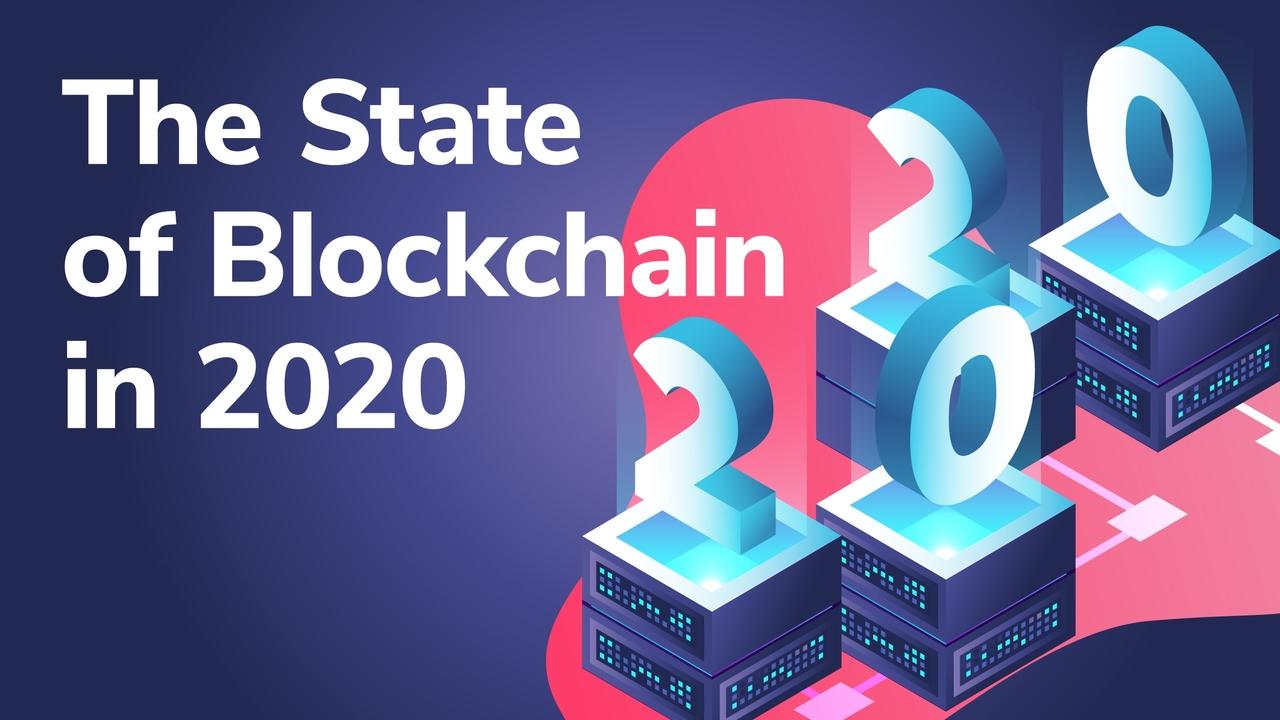
Blockchain courses are becoming more and more appealing as this new market witnesses another boom, both in terms of cryptocurrency prices and the number of blockchain projects being launched. Once again, the crypto industry is full of exciting news, similar to 2017 when Bitcoin’s all‑time high tested the $20,000 mark – and there’s much more to come. As we face growing economic uncertainty related to the COVID-19 pandemic, interest in crypto and blockchain technology is surging.
Put simply, it’s that time of the year again. The last few weeks booming crypto markets are driving market sentiment, with widespread fear of missing out (FOMO) and overall “block hype” in the industry. However, along with this comes a decent amount of misleading information. Here on the Ivan on Tech Academy blog, we give you the best educational blockchain advice, tips on what you can do to act rationally in the crypto market, and valuable information on how to find a job in blockchain and embark on a thrilling adventure into this decentralized digital universe.
Whether you’re new to the space or already a crypto enthusiast, this blog post will introduce you to the blockchain basics, with its promise of decentralization and privacy, and we’ll tell you about the best blockchain programming courses around for creating dApps and NFTs. By the end of this article, you’ll know what steps to take to learn about blockchain, build a better future for yourself and take control of your own finances. If you want to truly master blockchain technology, enroll in Ivan on Tech Academy – one of the top blockchain education platforms – and supercharge your blockchain knowledge!
Blockchain history
The next big thing since the internet… but bigger!
Before going into the state of blockchain in 2020, we first need to give a bit of history on the blockchain field and the history of global computing. Half a century ago, when military experts and top scientists were in fear of nuclear war, a scientist named J. C. R. Licklider came up with an idea for a “Galactic Network”. This galactic network would be consist of computers that could communicate with one another, allowing people to gather data and access computer programs from anywhere in the world.
Because of this revolutionary idea, Licklider is often called the “father of the internet”. Later, another scientist suggested a solution for sending information from one computer to another using “packet switching”. What sounds suspiciously like a term related to drug smuggling or the secret services actually refers to a technology that breaks data down into blocks before sending it to its destination. Fast-forward a few decades, and an exciting new technology emerged – the internet, or web 1.0.
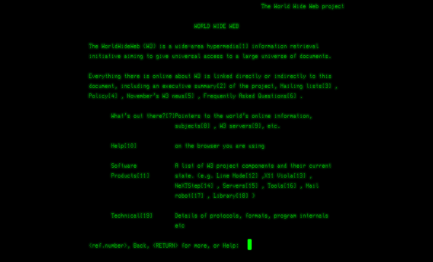
Reconstruction of the first website
Following its inception, the internet proceeded to take off like a rocket. As social media became the hot new thing, along with the development of smartphones, the internet shot to a whole new level – what’s commonly referred to as web 2.0. Right now, we’re on the brink of yet another technological revolution with the advent of blockchain technology – or web 3.0.
The first one to implement a blockchain was Satoshi Nakamoto, with the creation of the first cryptocurrency – Bitcoin. No one knows who this mysterious blockchain founder was, but Satoshi Nakamoto is the person, or persons, who created the first blockchain to solve the instability of the current financial system.
Although it is still early days, in the last five years, the Bitcoin blockchain has attracted a sizeable amount of interest. Since 2011, when Bitcoin was trading at around $1.00, the price of BTC has witnessed gains of almost 2,000,000%.
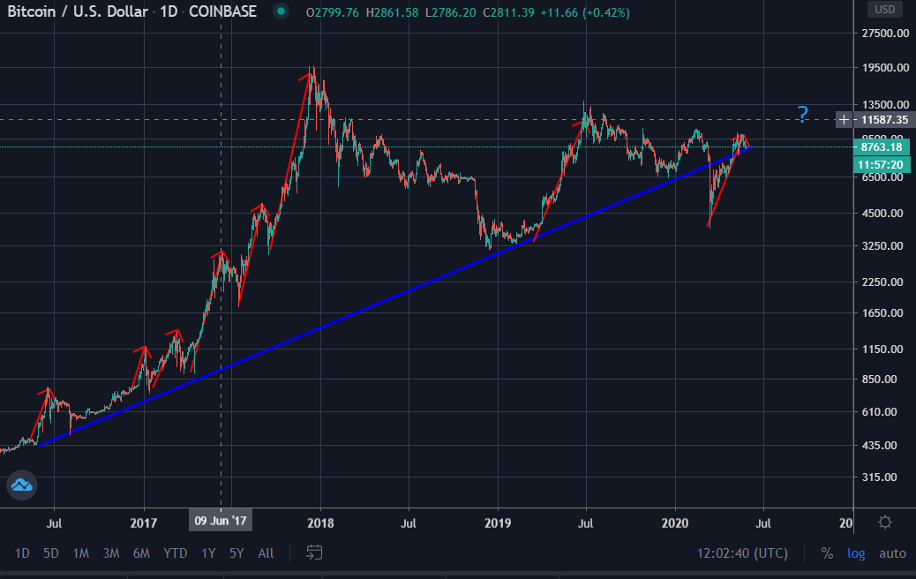
The price of Bitcoin price from its all-time high in 2017 to July 2020
Nevertheless, the answer to the question “is it too late to get into crypto” is still a firm no! Right now, 99% of the population would barely be able to explain what Bitcoin and Ethereum are – let alone DeFi and dApps! As such, let’s get down to it. Read on, and you’ll soon be part of the 1% of people who know what this promising new decentralized technology is all about!
What is Blockchain?
Before we get into crypto and the possible future of finance, first, you need to learn about blockchain technology and work out where you can apply your skills to be an architect of this new internet.
Essentially, a blockchain is a distributed, decentralized public ledger. It basically consists of a network of computers that store digital information in public databases. As such, the Bitcoin blockchain is the most famous distributed ledger. Data, such as a transaction with information about when it took place and the amount transferred, is stored on this database in blocks. To put it simply, when that transaction is validated by the network of computers as being correct, it becomes stored in the block. Once all of the transactions in the block have been confirmed, the block is hashed (it is given a unique id) before being added to the public blockchain for everyone to see.

Snippet from Blockchain.com, with the latest blocks mined, their “height”, id (or “hash”), the time it was mined, who it was mined by and the size of the block.
When it comes to Bitcoin and blockchain technology, there are several key points to take into consideration, each providing a solution to issues of great importance. This is what makes blockchain and digital assets so fascinating and why they have a plethora of use cases.
Immutability & cryptography: blockchain security
One of the first aspects to consider is immutability. The blockchain is secured by cryptography, which is probably your best bet if you want to keep information private and safe. The information can’t be modified without changing all the subsequent blocks, and if that were to happen, there wouldn’t be “consensus” among all the other nodes in the network – something which is required. The nodes are the computers that store the database and validate the transactions, whereas the miners validate the transactions and publish them on the blockchain.
Decentralization: inclusion and efficiency
Secondly, the general idea is that blockchains are decentralized. This means that your data isn’t stored in one physical place but rather spread out over a network of computers. A decentralized world is one where open source is encouraged, and where peer-to-peer exchanges prevent us from having to go through unnecessary third parties.
So, instead of having a central authority that dictates how the rest of the system works, and where only a handful of people can access the data, there is no supreme authority in a decentralized network. As such, everyone is allowed to take part, and everyone contributes to the network.
Trustless: it’s not that there’s no trust, there’s just no need
What’s more, the blockchain is trustless. “But isn’t trust good?” you might say. Of course! However, when it comes to peer‑to‑peer transactions, you never want to be too sure. What is meant here is that trust isn’t needed. It’s not even an issue.

You don’t need to ask yourself whether someone will honor a transaction or not. With trustless P2P payments on the blockchain, payments are carried out automatically by the program’s code.
Encrypted distributed ledgers: privacy and transparency
As modern payment systems are centralized, banks have access to your information. They know what you bought and when you bought it. Blockchains are transparent while maintaining privacy. For example, the transaction can be seen by the public, but that person’s identity is not really known. You only see a public key like this:
0xC3f7465bEec8F018cB632Db2a673d603M7794F10
While it is possible to find out some information about Bitcoin transactions, other projects in the cryptocurrency sector offer even more privacy. Some projects, such as the privacy coins Monero and Zcash, have made significant progress in terms of privacy by concealing information even more thanks to cryptography.
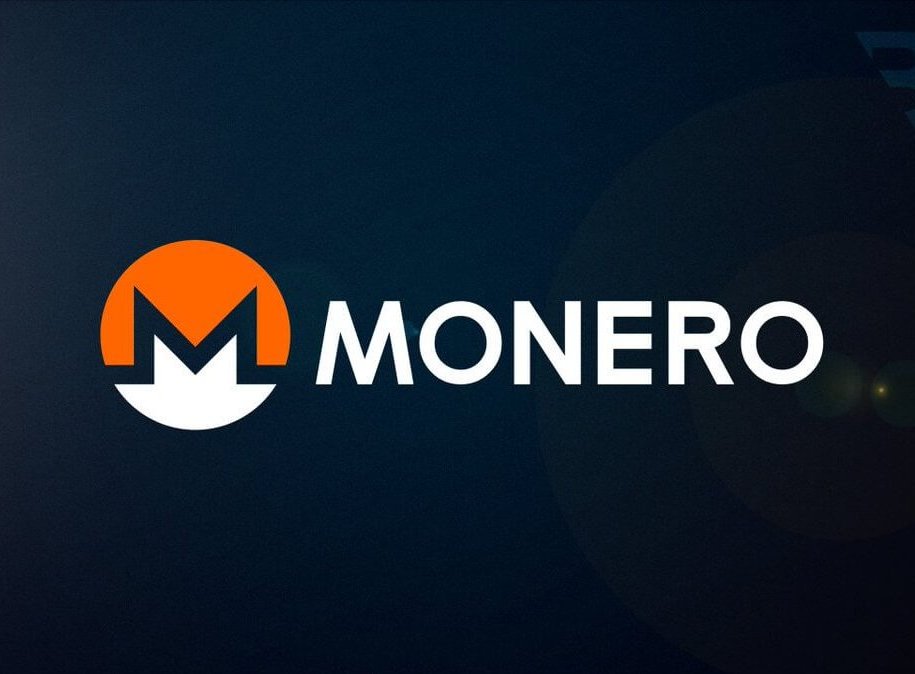
Now that you’ve been introduced to blockchain technology and Bitcoin, let’s move on to the Ethereum protocol and dApps. It will soon become clear why learning how this technology works is so important and why it may be a good idea to enroll in a blockchain course in 2020.
Blockchain will revolutionize technology, finance and entertainment
The reason why you should seriously consider some kind of blockchain education is because it has enormous potential for a wide range of use cases, from identity management, voting, healthcare, social media, gaming, trading, payment services, crowd-funding – the list goes on. Like the internet, blockchain technology will weave its way into all areas of society, and you don’t want to be a total noob when things really kick-off.
It’s not all about finance and technology, though; whatever sector you work in, your company will no doubt implement blockchain into its systems to some extent, and we will no doubt start to see it running in the background in our daily lives. By understanding blockchain, crypto and dApps, you can really stand out from the crowd and be a reference to who people can turn.
dApps
Obviously, technology is one field where we have seen blockchain job opportunities on the rise. Decentralized applications or dApps are changing the technological landscape.
If you’re interested in pursuing a career in blockchain, software programming could be a great start. The salary of blockchain developers is beginning to compete with those of data analysts and AI experts. Some of the most sought‑after talents include software developers, programmers, UI designers, and other IT experts. Tech companies are on the lookout for people mastering well-known programming languages such as JavaScript, C++, and Go, as well as native languages such as Solidity (Ethereum) and Script (Bitcoin).

As interest in this industry gains ground, some truly incredible projects have been launched, from borrowing and lending, selling computing power, voting, exchanging assets, identity management, DAO platforms (Decentralized Autonomous Organizations), P2P payment services, and more… The full potential of dApps really comes down to the imagination and creativity of the developers and users.
Bitcoin can be seen as the first and most famous decentralized application, which uses miners’ proof‑of‑work, whereas Ethereum is transitioning to proof‑of‑stake, and can be summed up as put by ethereum.org itself:
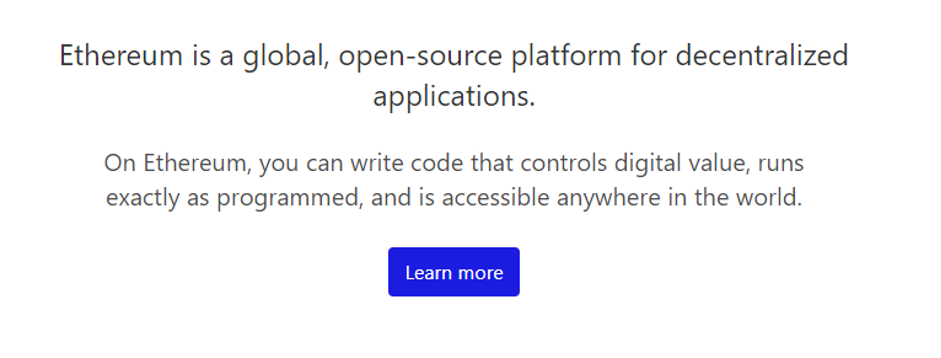
Ethereum represents the new foundations of an internet with built‑in money and payments. This is an ecosystem where people can take back control of their hard‑earnt cash in an open financial system with a decentralized, open‑access, and open‑source infrastructure.
Another example is EOSio, an open-source blockchain with fast and cheap transactions that aims to remedy the scalability issues other protocols face. It is developed by block.one, a leader in blockchain solutions, which provides an infrastructure for decentralized applications.
Finance & DeFi
Finance is the perfect industry for blockchain applications, whether for money markets or insurance. Now, there is a new kid on the block: DeFi, in other words, Decentralized Finance.
Cryptocurrencies provide a solution for making and receiving payments, without discrimination, from anywhere in the world, but now, DeFi is taking things one step further. Thanks to this solution to what some believe to be outdated financial systems, financial services are open to everyone and anywhere, providing they have an internet connection.
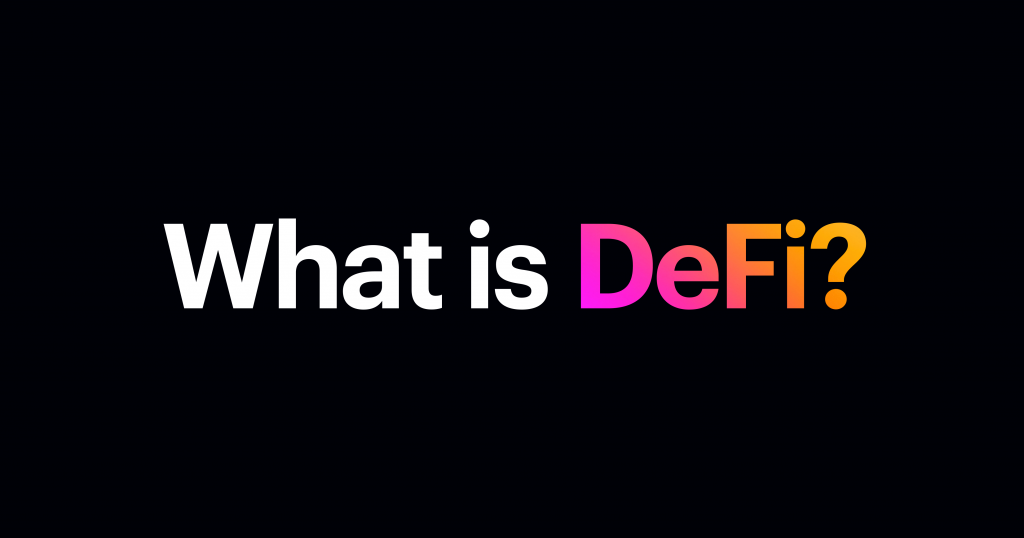
DeFi allows people or organizations to create stablecoins or a decentralized reserve bank, where people can borrow and lend money, swap assets, and trade cryptocurrencies. Considering the current global situation, the use of digital currencies and blockchain solutions for finance and banking has become more and more appealing.
Despite appearing cautious and sometimes even critical of digital assets, Wall Street is starting to show an interest in cryptocurrencies and blockchain technology, with Grayscale now owning half a million Bitcoin. Finance, however, isn’t the only area where great DeFi projects have popped up. The gaming industry has shown an exciting reaction to this budding technology, and there has been a huge spike in NFTs.
Gaming & Entertainment
Gaming is a huge industry where blockchain technology has great potential, and one which is being revolutionized by the virtual world of digital assets. So, if you’re into gaming, you’re going to love NFT’s. These Non-Fungible Tokens allow you to own a unique digital animal (CrypoKitties), a piece of real estate (Upland) or a magical in-game item, which can then be traded in for another digital asset or real cash!
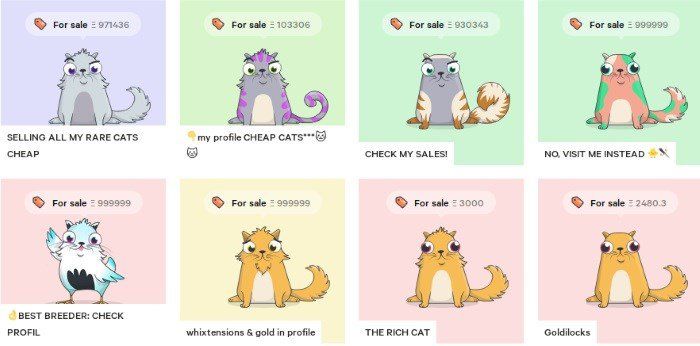
Another sector is gambling, where trust in the system is paramount. Blockchain solves trust issues through its transparency, so online casinos can’t cheat when it comes to figures about winnings and pay‑outs. Users can be sure that the system is fair, while privacy coins, such as Zerocoin and Monero, allow them to keep their data and gains secret. There also has been an increase in prediction markets and no‑loss lottery games.
Blockchain technology will also benefit the music industry and content creators. Basic Attention Token, commonly known as BAT, is one example of a token in the digital advertising industry – which is often exploited by middlemen, full of web trackers, and rife with fraud. The BAT platform creates digital tokens that publishers, advertisers, and users can exchange for advertising or “attention-based engagement”. Thanks to the Brave browser, internet users get rewarded in BAT for viewing adverts, and they can tip creators for the content they enjoy.
How to make money in crypto – Invest in yourself
Learn how blockchain works
To make money in crypto, the first word of advice is: don’t pour your life savings into crypto. Instead, you should dedicate your time to getting familiar with how blockchain actually works. Knowledge will be the true source of wealth here. To get started, look around for free online blockchain courses offered by universities, online communities, YouTube videos, or even a local blockchain workshop. See if there are any professional certifications you may be interested in, and why not try a paid course for your blockchain education, such as Ivan on Tech Academy.
You could also create your own cryptocurrency so that you thoroughly understand the values and potential of digital assets. You don’t necessarily have to be an expert programmer. Some platforms will soon provide solutions so that you can make your own cryptocurrency in minutes without you having to understand coding.
Blockchain is, of course, highly compatible with finance, but if you’re more into what’s under the hood and prefer the technical aspects of blockchain, try learning to code and take a programming course which will teach you how to develop smart contract-driven applications and dApps.

The best way to make money in crypto and blockchain is to make knowledge your wealth. Study how these decentralized technologies work before starting a career in blockchain, and don’t go turning your dad’s car into an NFT and selling it on a decentralized marketplace, such as OpenSea.
Education & job market
Education opportunities are slowly on the rise, with several universities now offering blockchain degrees: Stanford, MIT, the University of Cumbria, the IT University of Copenhagen… There are also numerous online courses available in addition to other free online resources. Local professional organizations are now also offering some kind of Bitcoin 101 courses for beginners or programming tutorials on HTML, CSS, JavaScript, and Solidity. Programming is clearly one area where there is greater demand than there is supply. IT experts, front‑end and back‑end developers specializing in decentralized applications will have no problem landing top‑paid jobs in this rapidly expanding sector.
From universities to online courses: the changing trends in education
As the need for university diplomas in certain fields drops and the cost for university‑level education is on the rise, we have seen an evolution in the education industry. With this year’s social distancing measures and the rise of online education, rather than looking to enroll at prestigious universities and taking out loans they can’t afford, those keen to learn more may want to enroll in online courses from a community of experts with the ambition to build the technology of the future.

One aspect which is vital to this new technology and to education in the blockchain sector is the community. Whether you’re developing dApps, creating games, building technology, or learning new skills, in this industry, the community is what makes projects come to life.
Ivan on Tech Academy
Ivan on Tech Academy is not just an online blockchain education platform. It’s also built around a constantly growing community. New trends and technologies means that the selection of courses expand, as the Academy keep up with new tools, protocols, and use cases.
Ivan on Tech Academy offers a great variety of courses, from beginner courses on Bitcoin and Ethereum, to smart contract programming, through technical analysis and blockchain for businesses. Like the number of coins available on an exchange, the list of courses available is getting longer and longer, and there is so much more is to come. If you enroll using the exclusive promo code BLOG20, you’ll get 20% off on your membership!
So… tell me again.
Why should I care about blockchain?
Simply put, because blockchain technology is the future and it’s coming fast! Society and technology are constantly evolving, and they will continue to do so no matter what. Now that we have become part of such a globalized system, maybe we can form one global community, rebuild outdated systems and redesign the codes of how business and society work. This technology can help us to achieve this goal and it offers an abundance of job opportunities in blockchain for all walks of life. This major technological revolution is now upon us, and it will have an impact on how all our systems work, whether in the fields of finance, technology, or for society as a whole. So, now is the time to start learning about blockchain technology in order to build a better, brighter future for everyone, and be a part of the revolution.
